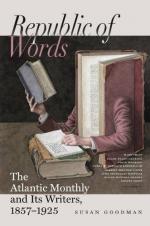“I am a terrible forgetter of dates,” she used to say, when any one asked her of the time when; but for the manner how she was never at a loss. “Poor Haydon!” she began. “He was an old friend of mine, and I am indebted to Sir William Elford, one of my dear father’s correspondents during my girlhood, for a suggestion which sent me to look at a picture then on exhibition in London, and thus was brought about my knowledge of the painter’s existence. He, Sir William, had taken a fancy to me, and I became his child-correspondent. Few things contribute more to that indirect after-education, which is worth all the formal lessons of the school-room a thousand times told, than such good-humored condescension from a clever man of the world to a girl almost young enough to be his granddaughter. I owe much to that correspondence, and, amongst other debts, the acquaintance of Haydon. Sir William’s own letters were most charming,—full of old-fashioned courtesy, of quaint humor, and of pleasant and genial criticism on literature and on art. An amateur-painter himself, painting interested him particularly, and he often spoke much and warmly of the young man from Plymouth, whose picture of the ‘Judgment of Solomon’ was then on exhibition in London. ‘You must see it,’ said he, ‘even if you come to town on purpose.’”—The reader of Haydon’s Life will remember that Sir William Elford, in conjunction with a Plymouth banker named Tingecombe, ultimately purchased the picture. The poor artist was overwhelmed with astonishment and joy when he walked into the exhibition-room and read the label, “Sold,” which had been attached to his picture that morning before he arrived. “My first impulse,” he says in his Autobiography, “was gratitude to God.”
“It so happened,” continued Miss Mitford, “that I merely passed through London that season, and, being detained by some of the thousand and one nothings which are so apt to detain women in the great city, I arrived at the exhibition, in company with a still younger friend, so near the period of closing, that more punctual visitors were moving out, and the doorkeeper actually turned us and our money back. I persisted, however, assuring him that I only wished to look at one picture, and promising not to detain




